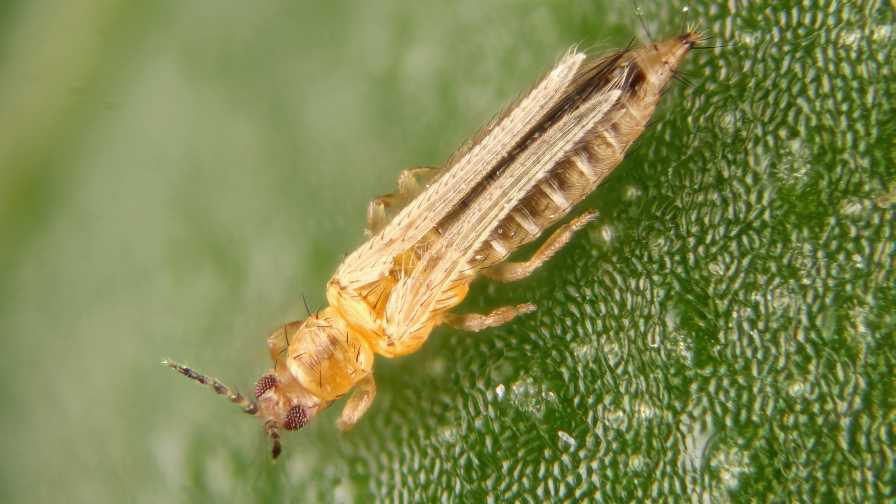Why Controlling Western Flower Thrips Just Got a Little Easier

Photo: Matthew Bertone
The western flower thrips has contributed to billions of dollars’ worth of damage on a wide range of food, fiber, and ornamental crops around the world. Scientists now have a complete genetic blueprint to help them better understand the pest and to find ways to control it.
A peer-reviewed scientific paper published in BMC Biology fills a significant gap in agricultural science and insect science by highlighting the first genome sequence and analysis for a member of Thysanoptera, an order that contains more than 7,000 species of small insects with fringed wings.
Dorith Rotenberg, Associate Professor with North Carolina State University’s Department of Entomology and Plant Pathology, is lead author of the paper. Fifty-six other researchers from universities and research institutions on five continents also contributed.
Rotenberg says the size of the team reflects the importance of the western flower thrips, or Frankliniella occidentalis, which is known to feed on hundreds of types of field and greenhouse-grown crops.
“They’re on everything – flowers, fruit trees, solanaceous crops – you name it,” Rotenberg says. “They’re a major pest of the Southeast U.S. and California as well as anywhere around the world you have a lot of fruits and vegetables growing.”
The project to sequence the thrips genome is affiliated with i5k, an ambitious international effort to sequence and analyze the genomes for 5,000 arthropod species – insects, crustaceans, spiders, and other creatures with exoskeletons, segmented bodies, and pairs of jointed legs.
Western flower thrips are native to the western North America, but since the 1970s, they have spread quickly throughout the world. The insect damages plants not only by feeding and laying their eggs on them, but also by infecting plants with viruses, including the difficult-to-control tomato spotted wilt virus, which has been known to infect more than 1,000 plant species, ranging from tobacco and peanuts to pansies and chrysanthemums.
Controlling the western flower thrips is difficult because the insect reproduces rapidly and becomes resistant to insecticides.
“Entomologists and growers know this very well: Thrips are notorious for building up resistance very quickly,” Rotenberg says. “And so you have to consider developing and using different types of chemicals and integrating alternative control strategies to manage this pest.”
Read more in this article from the North Carolina State University College of Agriculture and Life Sciences.








